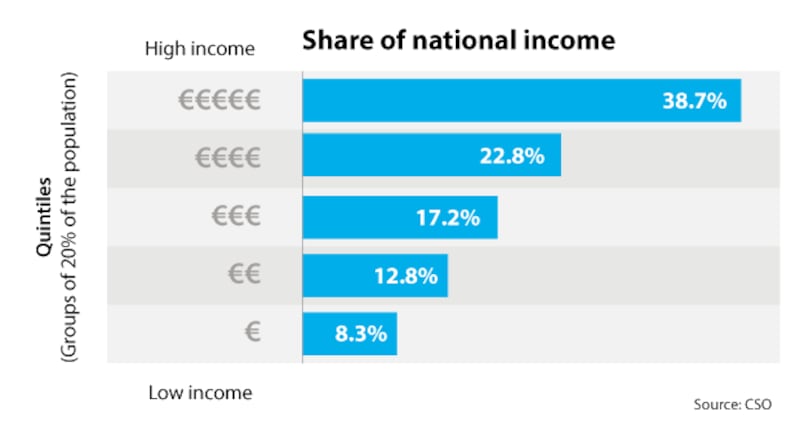The economic recovery is being reflected in people’s pockets and average disposable income last year was almost back at pre-crash levels.
The latest survey on income and living conditions from the Central Statistics Office shows incomes on average for 2016 of €20,597, returning in real terms to just below 2008 levels.
Given strong earnings and employment figures for 2017, it is safe to say that average incomes are now back above pre-crash highs.
The figures also show a generally downward trend in poverty and deprivation data in recent years. However a significant minority remain stuck on low income levels – and those in the Border, midlands and western region are most at risk.
The figures show the brutal impact of the recession, with real disposable incomes falling by more than 16 per cent between their 2008 peak and the floor in 2013.

Almost all the losses were recouped by 2016, so in this sense the recovery has delivered. And the figures show that, on average, different income groups have gained roughly proportionately from the recovery, even if individual circumstances varied hugely.
Risk of poverty
Meanwhile the social welfare system continues to play a vital role. Had it not been for social welfare, some 45 per cent of people would have been classified as being at risk of poverty in 2016, while the actual figure was 16.5 per cent.
A number of measures are used to classify poverty and deprivation. The “at risk of poverty rate” is based on people earning less than 60 per cent of the national median income.
The income level to be counted in this group rises as overall average incomes increase, leading to inevitable debate on their interpretation. This “at risk” group fell slightly from 16.9 per cent in 2015 to 16.5 per cent in 2016 – about 790,000 people – and is down from a 17.3 per cent high in 2012.
A different measure – the deprivation rate, looking at people who can’t afford at least two of 11 essentials, for example proper shoes, clothing, heating and so on – has fallen from 30.5 per cent in 2012 to 21 per cent last year, still more than one in five.
With unemployment one of the key risks for being at risk of poverty, the further fall in joblessness in 2017 will have reduced the poverty indicators further. However it is clear that while many are feeling the benefits of the recovery, there remain significant numbers stuck in difficult financial circumstances.













